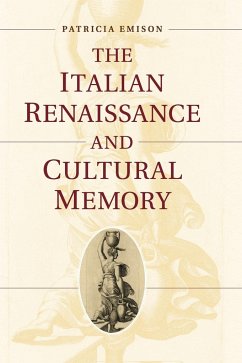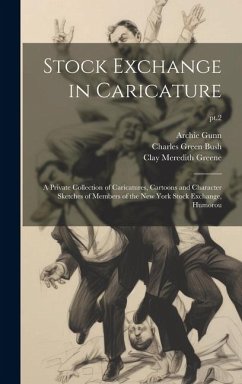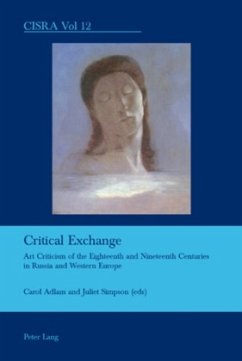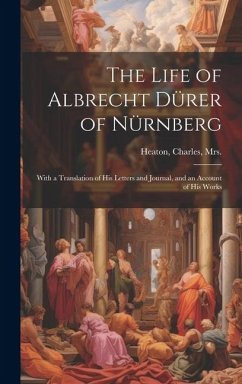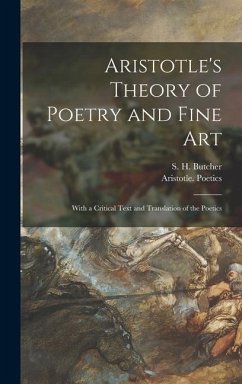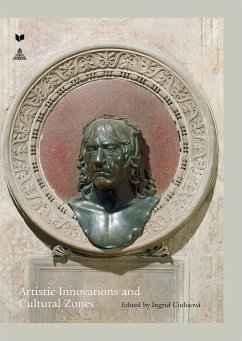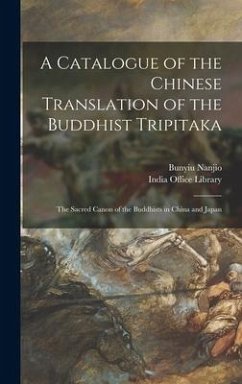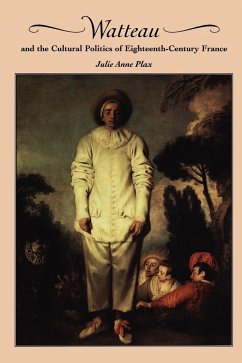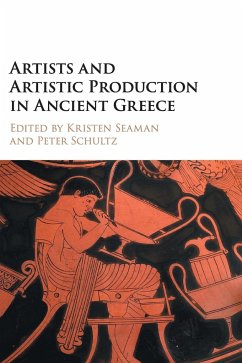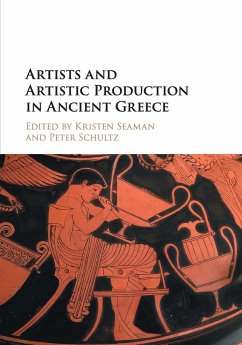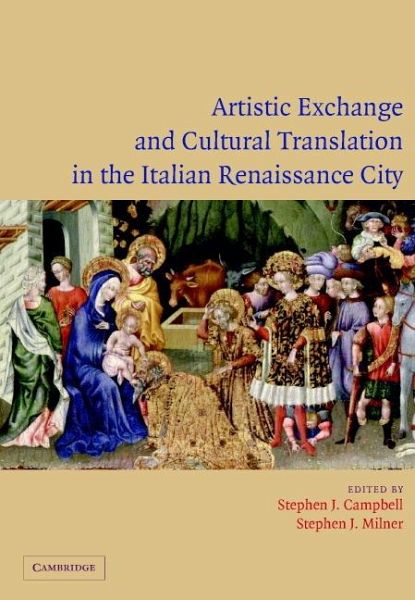
Artistic Exchange and Cultural Translation in the Italian Renaissance City
Versandkostenfrei!
Versandfertig in 1-2 Wochen
124,99 €
inkl. MwSt.

PAYBACK Punkte
62 °P sammeln!
Short description/annotationConsiders the reception of the early modern culture of Florence, Rome, and Venice.Main descriptionThis book considers the reception of the early modern culture of Florence, Rome, and Venice in other centers of the Italic peninsula, such as Ferrara, Bologna, Ancona, San Gimignano, and Pistoia, which had flourishing local cultures of their own. Offering a perspective that focuses on dialogue and exchange between different urban centers and cultural groups, it also involves a reexamination of the Renaissance itself as a form of translation of a past culture, one that a...
Short description/annotation
Considers the reception of the early modern culture of Florence, Rome, and Venice.
Main description
This book considers the reception of the early modern culture of Florence, Rome, and Venice in other centers of the Italic peninsula, such as Ferrara, Bologna, Ancona, San Gimignano, and Pistoia, which had flourishing local cultures of their own. Offering a perspective that focuses on dialogue and exchange between different urban centers and cultural groups, it also involves a reexamination of the Renaissance itself as a form of translation of a past culture, one that attempted to assimilate the lost or fragmentary world of the Roman emperors, the Greek Platonists, and the ancient Egyptians. Collectively the essays examine how the processes of cultural self-definition varied between the Italian urban centers in the early modern period, well before the formation of a distinct Italian national identity. Exploring how artistic forms made the transition from one Italian city to another, attention is also focused on the subtle modification of practice required by local conditions and priorities.
Table of contents:
Introduction: art, identity and cultural translation in Renaissance Italy Stephen J. Campbell and Stephen J. Milner; Part I. How to Translate: 1. Subject matters: contracts, designs and the exchange of ideas between painters and clients in Renaissance Italy Michelle O'Malley; 2. Copying practices and marketing strategies in a late fifteenth-century painter's workshop Megan Holmes; 3. Mino da Fiesole's Forteguerri Tomb: a 'Florentine' monument in Rome Shelley Zuraw; 4. Bertoldo di Giovanni, republican court artist Luke Syson; Part II. Regional Identities and the Encounter with Florence: 5. 'Our eagles always held fast to your lilies': the Este, the Medici, and the negotiation of cultural identity Stephen J. Campbell; 6. Giovanni Il Bentovoglio and the uses of chivalry: creating a republican court in late fifteenth-century Bologna Georgia Clarke; 7. 'Acqua viva e corrent': private display and public distribution of fresh water at the Neapolitan villa of Poggioreale as a hydraulic model for sixteenth-century Medici gardens Bruce L. Edelstein; 8. The politics of patronage: Verrocchio, Pollaiuolo and the Forteguerri monument Stephen Milner; 9. Between legend, history and power politics: the Santa Fina Chapel in San Gimignano Deborah Krohn; Part III. Negotiating the Cultural Other: 10. From center to periphery in the Florentine intellectual field: orthodoxy reconsidered Christopher Celenza; 11. The Sphinx in the piazza: Egyptian monuments and urban spaces in Renaissance Italy Brian A. Curran; 12. Immigrants and church patronage in sixteenth-century Ancona Morten Steen Hansen.
Considers the reception of the early modern culture of Florence, Rome, and Venice.
Main description
This book considers the reception of the early modern culture of Florence, Rome, and Venice in other centers of the Italic peninsula, such as Ferrara, Bologna, Ancona, San Gimignano, and Pistoia, which had flourishing local cultures of their own. Offering a perspective that focuses on dialogue and exchange between different urban centers and cultural groups, it also involves a reexamination of the Renaissance itself as a form of translation of a past culture, one that attempted to assimilate the lost or fragmentary world of the Roman emperors, the Greek Platonists, and the ancient Egyptians. Collectively the essays examine how the processes of cultural self-definition varied between the Italian urban centers in the early modern period, well before the formation of a distinct Italian national identity. Exploring how artistic forms made the transition from one Italian city to another, attention is also focused on the subtle modification of practice required by local conditions and priorities.
Table of contents:
Introduction: art, identity and cultural translation in Renaissance Italy Stephen J. Campbell and Stephen J. Milner; Part I. How to Translate: 1. Subject matters: contracts, designs and the exchange of ideas between painters and clients in Renaissance Italy Michelle O'Malley; 2. Copying practices and marketing strategies in a late fifteenth-century painter's workshop Megan Holmes; 3. Mino da Fiesole's Forteguerri Tomb: a 'Florentine' monument in Rome Shelley Zuraw; 4. Bertoldo di Giovanni, republican court artist Luke Syson; Part II. Regional Identities and the Encounter with Florence: 5. 'Our eagles always held fast to your lilies': the Este, the Medici, and the negotiation of cultural identity Stephen J. Campbell; 6. Giovanni Il Bentovoglio and the uses of chivalry: creating a republican court in late fifteenth-century Bologna Georgia Clarke; 7. 'Acqua viva e corrent': private display and public distribution of fresh water at the Neapolitan villa of Poggioreale as a hydraulic model for sixteenth-century Medici gardens Bruce L. Edelstein; 8. The politics of patronage: Verrocchio, Pollaiuolo and the Forteguerri monument Stephen Milner; 9. Between legend, history and power politics: the Santa Fina Chapel in San Gimignano Deborah Krohn; Part III. Negotiating the Cultural Other: 10. From center to periphery in the Florentine intellectual field: orthodoxy reconsidered Christopher Celenza; 11. The Sphinx in the piazza: Egyptian monuments and urban spaces in Renaissance Italy Brian A. Curran; 12. Immigrants and church patronage in sixteenth-century Ancona Morten Steen Hansen.





